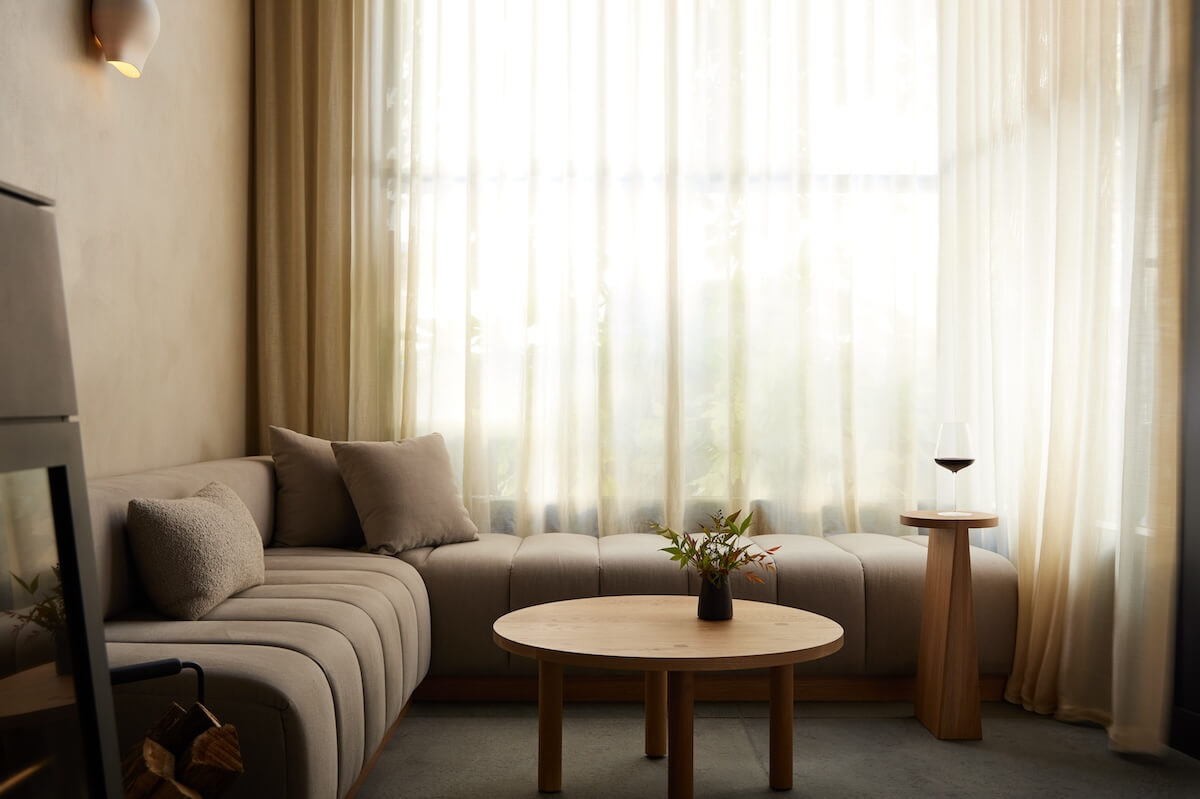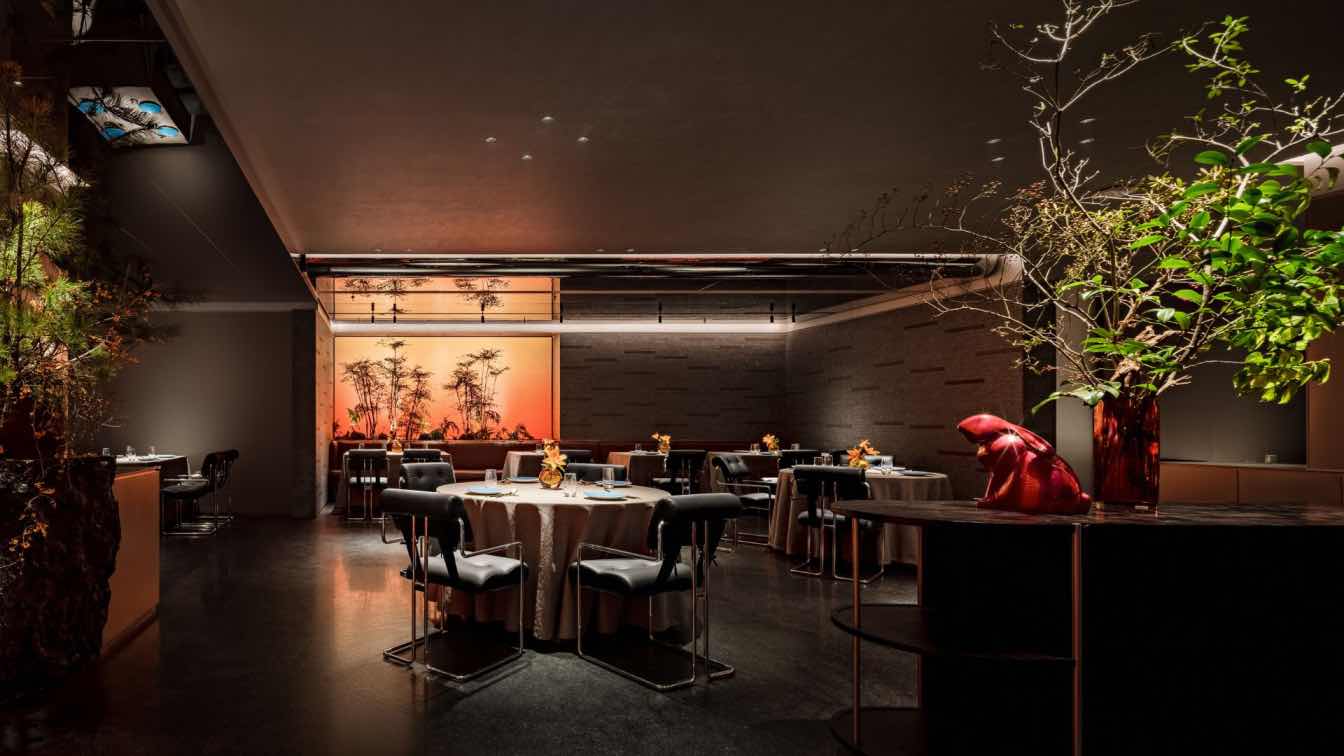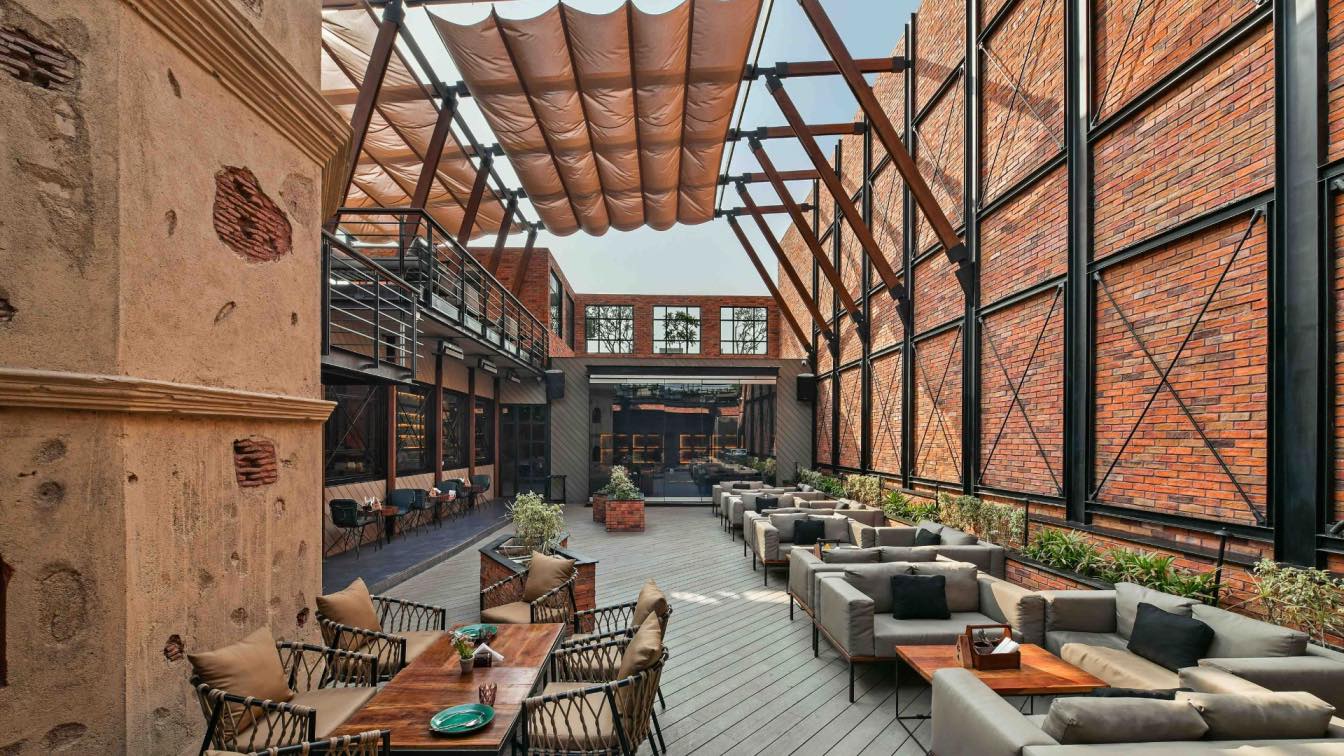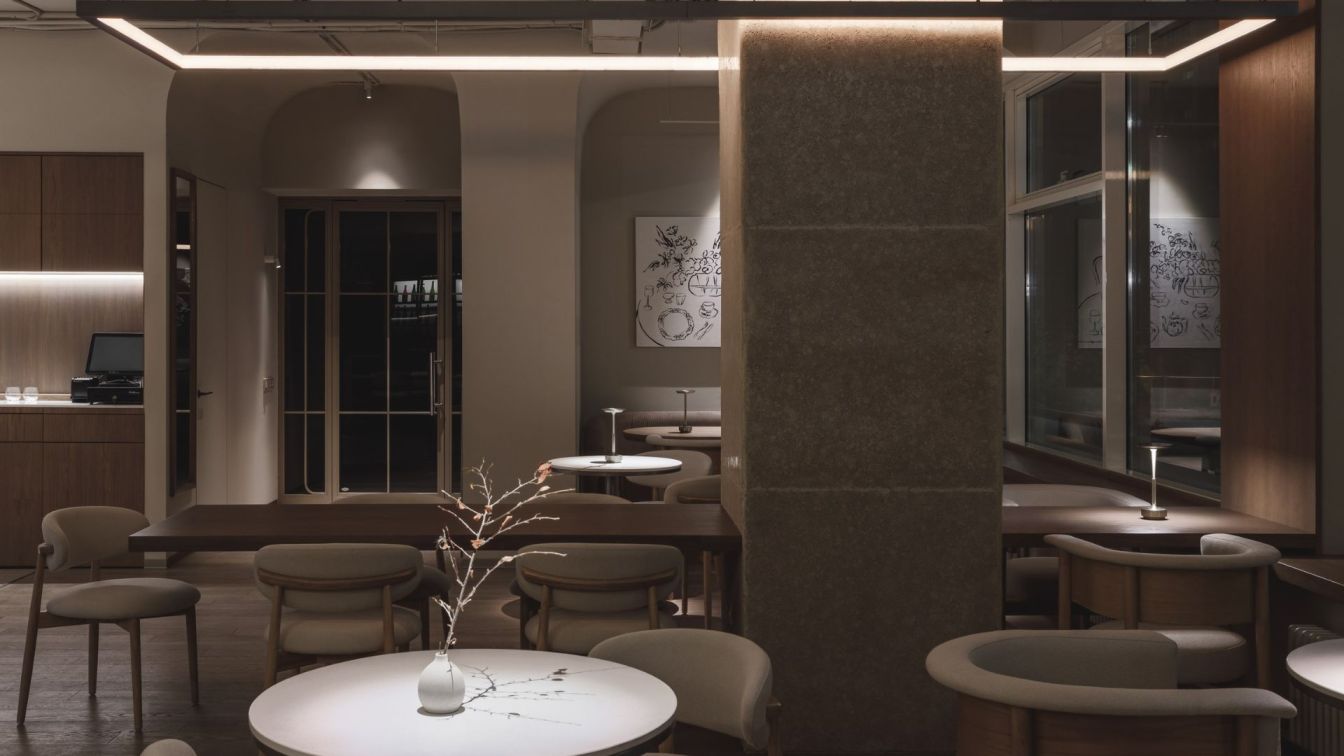Hacker Architects: Two-Michelin star chef Matthew Lightner’s new restaurant, ōkta, in McMinnville, Oregon, captures the essence of the Willamette Valley, the heart of Oregon’s wine country. Set within the McMinnville Downtown Historic District, the restaurant’s design is comfortably luxurious—subdued and understated. Here, food and environment combine to create a transcendent dining experience.
The entry area sets the tone through its minimalist mix of soft seating and curated objects showcasing craft and natural materiality. Subtly textured walls evoke the misty atmosphere that regularly envelopes the surrounding farmland of Yamhill County, a quality that gives the restaurant its name which refers to the amount of cloud cover and light on any given day. A minimalist wood-burning fireplace adds a multi-sensory element and hints at the kitchen beyond.
The 2,500-square-foot restaurant is organized into three contrasting dining experiences grounded by a large basalt erratic at its center, a remnant of the Missoula Floods that carried it to the Willamette Valley over 10,000 years ago at the end of the last ice age. The large, open kitchen ensures that guests are visually connected to the preparation of food. With every surface a unique exploration of texture and craft, the design elicits the feeling of home. White oak banquettes covered in mist-hued fabric and locally crafted tables lend a soft natural aesthetic to the space. Throughout the restaurant, hand-troweled plaster walls remain a constant, unifying the guest experience from one space to another, celebrating the subtle beauty of Oregon.
Below the dining room is the Cellar Bar, a hidden 24-seat venue featuring a mix of intimate lounge seating spread through a series of rooms where guests are served classically inspired cocktails and wine from the expansive wine library. Where soft tones grace the main floor lounge and dining room, the Cellar takes on a warm earthiness featuring rich leathers and burnt sugar-glazed terracotta tiles, recalling the rich soil, stone, and deep woods of the Pacific Northwest.










































